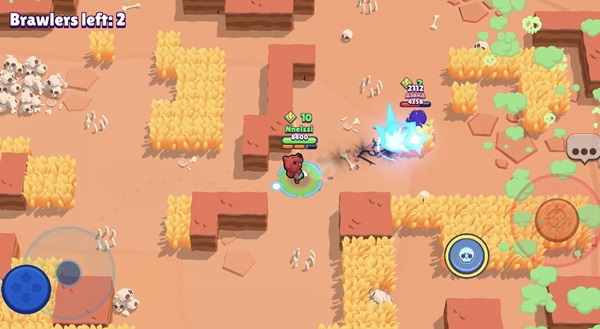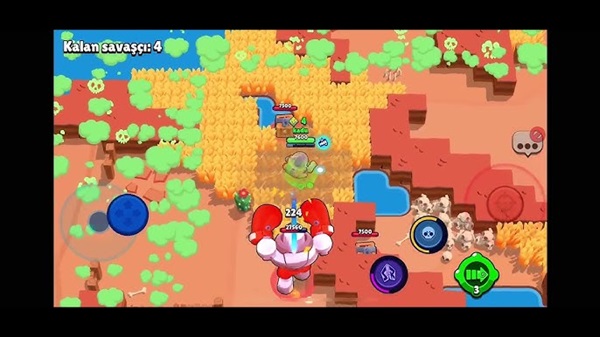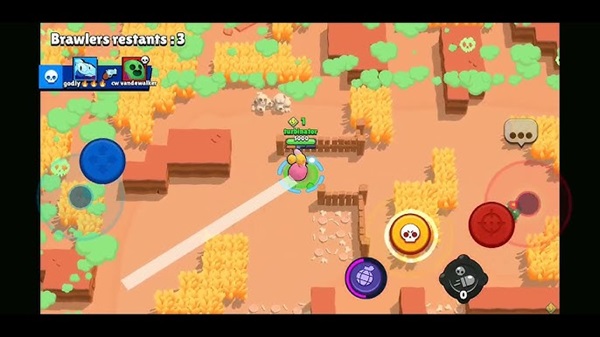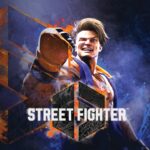
Brawl Stars
All trademarks belong to their respective owners.
Advertisement
January 2, 2025




 REMATCH
Introduction
In today’s gaming world, players seek not only entertainment but also unique and immersive experiences. Each game offers its own story, intriguing characters, and engaging challenges.
Storyline
Every game typically features a captivating storyline, ranging from epic adventures to heartfelt tales. Players assume the roles of characters, experiencing their journeys and making decisions that can alter the narrative.
Gameplay
Gameplay is a key factor in a game's appeal. Players engage in activities such as combat, puzzles, or exploring open worlds. The satisfaction of completing missions or overcoming challenges is something every gamer desires.
Graphics and Sound
Graphics and sound play crucial roles in creating the atmosphere of a game. Vivid visuals and realistic audio help players immerse themselves in the virtual world.
Conclusion
Games are not just tools for entertainment; they are avenues for exploration and experience. Each game offers its own lessons and emotions, making them unforgettable for players.
Read full review
REMATCH
Introduction
In today’s gaming world, players seek not only entertainment but also unique and immersive experiences. Each game offers its own story, intriguing characters, and engaging challenges.
Storyline
Every game typically features a captivating storyline, ranging from epic adventures to heartfelt tales. Players assume the roles of characters, experiencing their journeys and making decisions that can alter the narrative.
Gameplay
Gameplay is a key factor in a game's appeal. Players engage in activities such as combat, puzzles, or exploring open worlds. The satisfaction of completing missions or overcoming challenges is something every gamer desires.
Graphics and Sound
Graphics and sound play crucial roles in creating the atmosphere of a game. Vivid visuals and realistic audio help players immerse themselves in the virtual world.
Conclusion
Games are not just tools for entertainment; they are avenues for exploration and experience. Each game offers its own lessons and emotions, making them unforgettable for players.
Read full review
 Avatar World
Okay! Please tell me more about the game you'd like me to describe! What genre is it? What's the setting? What's the core gameplay loop? Knowing those details will help me create a compelling description.
For example:
Genre: RPG, Action, Puzzle, Strategy, Simulation, etc.
Setting: Fantasy, Sci-fi, Historical, Modern, etc.
Story (if any): A brief overview of the player's main objective.
Unique Features: What makes this game different and exciting?
Otherwise, I can provide a general game description. Let me know!
Read full review
Avatar World
Okay! Please tell me more about the game you'd like me to describe! What genre is it? What's the setting? What's the core gameplay loop? Knowing those details will help me create a compelling description.
For example:
Genre: RPG, Action, Puzzle, Strategy, Simulation, etc.
Setting: Fantasy, Sci-fi, Historical, Modern, etc.
Story (if any): A brief overview of the player's main objective.
Unique Features: What makes this game different and exciting?
Otherwise, I can provide a general game description. Let me know!
Read full review
 Schedule I
Enter the intriguing world of Schedule I: The Labyrinth of Legality, a thought-provoking adventure game that challenges players to navigate the complex landscape of controlled substances. As a passionate researcher, you will explore various environments, from high-tech laboratories to underground markets, all while uncovering the truths and myths surrounding Schedule I substances.
Players must solve puzzles, engage in strategic decision-making, and interact with diverse characters, each with their own perspectives on drug policy, legality, and research. Balance ethical dilemmas and moral choices while seeking knowledge that could change the landscape of medical science and public perception.
Read full review
Schedule I
Enter the intriguing world of Schedule I: The Labyrinth of Legality, a thought-provoking adventure game that challenges players to navigate the complex landscape of controlled substances. As a passionate researcher, you will explore various environments, from high-tech laboratories to underground markets, all while uncovering the truths and myths surrounding Schedule I substances.
Players must solve puzzles, engage in strategic decision-making, and interact with diverse characters, each with their own perspectives on drug policy, legality, and research. Balance ethical dilemmas and moral choices while seeking knowledge that could change the landscape of medical science and public perception.
Read full review
 Street Fighter 6
Street Fighter 6 is the latest installment in the iconic fighting game series developed by Capcom. This thrilling game brings together a roster of both classic and new characters, each with unique abilities and storylines, allowing players to immerse themselves in the vibrant world of street fighting.
Experience enhanced graphics and fluid animations that elevate the combat mechanics to new heights. The innovative Drive System introduces fresh gameplay elements, encouraging aggressive strategies and dynamic matches. Whether you're battling friends locally or competing online, Street Fighter 6 offers a rich multiplayer experience alongside a deep and engaging single-player campaign.
Available on multiple platforms, including consoles and mobile devices, Street Fighter 6 ensures that every player can enjoy the fierce and fast-paced action. Join the fight, master your favorite characters, and become a champion in the world of Street Fighter!
Read full review
Street Fighter 6
Street Fighter 6 is the latest installment in the iconic fighting game series developed by Capcom. This thrilling game brings together a roster of both classic and new characters, each with unique abilities and storylines, allowing players to immerse themselves in the vibrant world of street fighting.
Experience enhanced graphics and fluid animations that elevate the combat mechanics to new heights. The innovative Drive System introduces fresh gameplay elements, encouraging aggressive strategies and dynamic matches. Whether you're battling friends locally or competing online, Street Fighter 6 offers a rich multiplayer experience alongside a deep and engaging single-player campaign.
Available on multiple platforms, including consoles and mobile devices, Street Fighter 6 ensures that every player can enjoy the fierce and fast-paced action. Join the fight, master your favorite characters, and become a champion in the world of Street Fighter!
Read full review
 Whiteout Survival
Whiteout Survival is an immersive survival game set in a vast, frozen landscape where players must navigate extreme weather and gather resources to stay alive. Players face challenges from the harsh environment, wildlife, and other players as they explore this desolate world. With stunning graphics and realistic sound design, the game offers a thrilling experience as players collect food, water, and materials to build shelters and craft essential items. Engage with a dynamic community, participate in seasonal challenges, and develop survival strategies to master the game. Whether cooperating with allies or competing against adversaries, every decision counts in the relentless quest for survival.
Read full review
Whiteout Survival
Whiteout Survival is an immersive survival game set in a vast, frozen landscape where players must navigate extreme weather and gather resources to stay alive. Players face challenges from the harsh environment, wildlife, and other players as they explore this desolate world. With stunning graphics and realistic sound design, the game offers a thrilling experience as players collect food, water, and materials to build shelters and craft essential items. Engage with a dynamic community, participate in seasonal challenges, and develop survival strategies to master the game. Whether cooperating with allies or competing against adversaries, every decision counts in the relentless quest for survival.
Read full review
 Horror Spranky Beats
Sprunki Horror is a combination of horror and music rhythm games where you can unleash your creativity and show off your rhythm skills in a fun, relaxing atmosphere. Immerse yourself in a vibrant world where you can experiment with unique sounds and customize quirky characters, each with their own unique sounds. As you mix and match beats, melodies, and sound effects, you will create your own musical masterpiece.
Read full review
Horror Spranky Beats
Sprunki Horror is a combination of horror and music rhythm games where you can unleash your creativity and show off your rhythm skills in a fun, relaxing atmosphere. Immerse yourself in a vibrant world where you can experiment with unique sounds and customize quirky characters, each with their own unique sounds. As you mix and match beats, melodies, and sound effects, you will create your own musical masterpiece.
Read full review